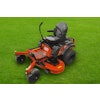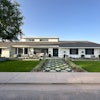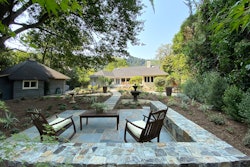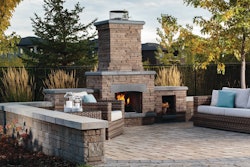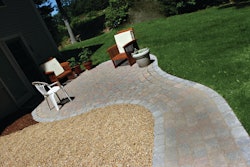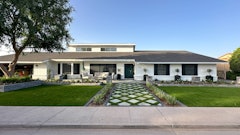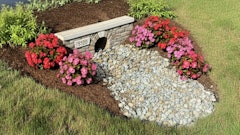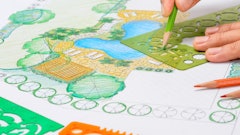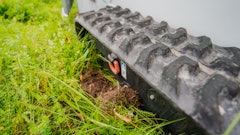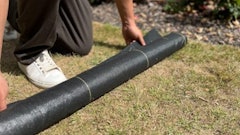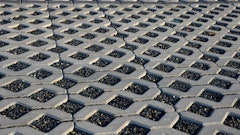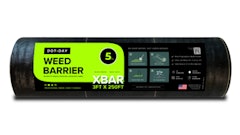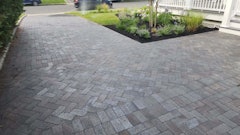
Homeowners are placing greater value—and greater investments—into their outdoor spaces than ever before, expanding their livable space by transforming their backyards into true extensions of the home. Biophilic design continues to gain momentum for its ability to seamlessly integrate interior and exterior elements, blurring the line between indoors and out. This growing trend is especially evident in hardscaping, where natural textures, organic materials, and strategic layouts already echo elements of interior design.
By integrating natural elements into built spaces, biophilic design fulfills our innate connection to nature. Rooted in the biophilia hypothesis, it goes beyond aesthetics, enhancing well-being, health and productivity. For builders and hardscape professionals, biophilic design offers a framework to create healthier, more engaging outdoor environments that are both beautiful and highly functional.
1. Plants & Natural Elements
Biophilic design doesn’t just shape the appearance of a space; it transforms how we feel in it.
A simple way to evoke biophilic design in a hardscaping project is to incorporate plants and natural elements. When thoughtfully integrated, they bring depth and impact to hardscape design, whether used to embellish patios, walkways or entryways. Climbing plants like ivy or wisteria can be added to structures like green walls, vertical gardens, pergolas or brick trellises, creating visual interest and an organic touch. Beyond aesthetics, vegetation offers many functional benefits, such as improving air quality, reducing stress, and shaping how people experience a landscape. Even structural features like retaining walls or built-in seating can be designed to cradle plants or frame garden views, reinforcing a fluid connection between nature and the built environment. The result is a layered, calming space where structure and landscape work in harmony.
2. Organic Materials
Biophilic design continues to drive demand for organic, sustainable materials like bamboo, wood, stone, and brick, which create warm, eco-friendly spaces. Clay brick pavers, in particular, stand out for their durability, natural aesthetics, and health benefits. Made from abundant clay and shale, they contain no plastics or volatile organic compounds, making them ideal for those with allergies or sensitivities. Their high thermal mass keeps them a comfortable temperature to walk on, while their density absorbs noise pollution, creating a quieter, more peaceful environment, especially in urban settings.
The growing preference for organic materials is redefining the look and feel of modern landscapes, bringing a grounded, timeless quality to outdoor design. Today’s hardscapes increasingly incorporate elements whose irregular textures add warmth, depth, and a sense of cohesion with the surrounding landscape. These materials lend richness and dimension to patios and pathways, offering structure without feeling overly manufactured and providing tactile, grounding surfaces that age beautifully over time. Whether used to frame a planting bed or anchor a quiet seating area, the imperfections and natural variations of organic materials lend character and depth, helping outdoor spaces feel more inviting, intentional, and interconnected.
3. Earth Tones
From warm neutrals and soft creams to earthy browns, nature-inspired colors play a key role in biophilic design. These tones evoke a sense of calm and familiarity in both indoor and outdoor environments, especially when paired with natural textures. Grey clay brick pavers, for example, are rising in popularity for their ability to mimic natural elements while maintaining a timeless look, their understated elegance and transitional tones adapting seamlessly to different architectural styles and environmental surroundings.
Incorporating natural materials, colors, patterns and forms is a powerful way to deliver high-performing, visually compelling and environmentally conscious projects.
For a bolder approach, shades like rich reds and deep, subtle blues reflect the unique colors found in the great outdoors, providing pops of color without overpowering the natural elements around them. From subtle accents — such as masonry insets, painted woodwork, and furniture — to immersive patios, pathways, and walls, the thoughtful use of earth tones adds balance to man-made features, creating an outdoor space that feels intentional, cohesive, and grounded in its environment.
4. Nature-Inspired Patterns & Shapes
Similar to color and texture, architectural shapes and forms offer a subtle yet powerful way to incorporate biophilic design, providing a strong sense of harmony and movement. This approach moves beyond traditional straight lines, favoring shapes that echo those found in the natural world. Clay brick pavers can be arranged into flowing patterns inspired by natural phenomena like waves or honeycombs, adding visual rhythm and serving as a more organic alternative to many standard layouts. Gently meandering pathways, circular patios, and curved structures can mirror the contours found in rivers, hillsides, and coastlines, softening overall hardscape designs and encouraging more relaxed, intuitive interactions with the space.
5. Indoor-Outdoor Flow
Indoor and outdoor living spaces are often designed separately, but merging them creates a seamless flow, enhancing both functionality and aesthetics. This connection — often a key aspect of biophilic design — enhances spaciousness, increases natural light, and strengthens the link to nature. To achieve this, you can use the same materials for both interior floors and exterior surfaces, creating a smooth transition. For example, opt for consistent materials for indoor floors and outdoor decks, or incorporate clay brick pavers to add an earthy, textured aesthetic to walkways and patios.
Biophilic design doesn’t just shape the appearance of a space; it transforms how we feel in it. For green builders, landscapers and hardscape professionals, incorporating natural materials, colors, patterns and forms is a powerful way to deliver high-performing, visually compelling and environmentally conscious projects. When these elements work together, they create spaces that feel intentional, enduring, and connected to nature, adding long-term value for clients and communities alike.


